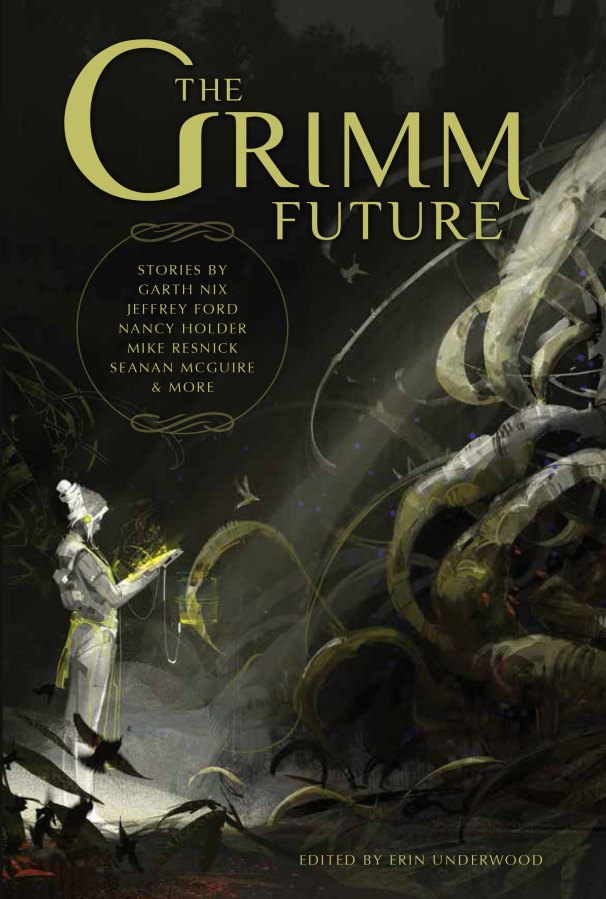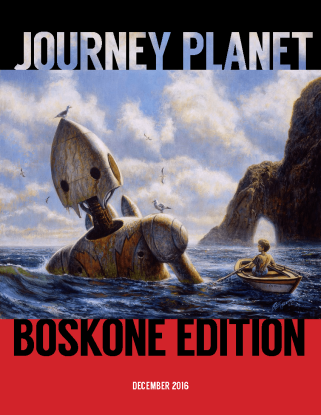Welcome to The Last Voyage of the Demeter Spoiler Discussion. Since the film has been out for a little while, and I didn’t get a chance to see it until now, I decided to make this a spoiler review/discussion because I really want to talk about how the story of Dracula’s passage to England works as a horror film.
You can read the post below or watch it on YouTube here:
I am a horror fan, and I especially love vampire stories. This has been a genre that I have followed for as long as I can remember. One of my first memories as a child was watching Bella Legosi in the 1931 version of Dracula. I was really young, and that night I woke up to noises outside my window. I was sure I saw Dracula there floating in the air watching me. Yeah, I know, it was just an imaginative dream laced with childhood fear, but it stayed with me. After that, I consumed horror films and books because I was convinced that if I learned all I could about monsters, I could kill them whether I was asleep or awake.
So, this is how I think when I watch horror. It’s also why I have a high bar for films that claim to be horror. It’s really hard to scare me, which actually makes the horror genre so much more fun when pulling a story apart, and I think The Last Voyage of the Demeter is a terrific film. It does all of the things that a good horror story should do, and it does them well.
To be clear, this isn’t a slasher, blood and guts film. That is a different kind of horror, which is human based. The Last Voyage of the Demeter is supernatural horror. It has rules with established characters and it takes place in an established world that is familiar territory to a lot of people. This makes it especially challenging to craft a well-told horror story because the audience isn’t learning the rules with the characters. Instead, we are monitoring the characters’ adherence to the rules, and any deviation will pull us out of the film, especially since the film has chosen to firmly embrace an existing and well-established story world.

The film’s success rests on the characters, the imagery, the plotting, and the unraveling of the mystery.
The cast is extremely well chosen, but it’s Corey Hawkins who plays Dr Clemens who leads the cast. He’s grounded, believable, and likeable. He comes to the Demeter with his own set of issues in life being a Cambridge trained doctor whose skin color keeps him from attaining positions for which he is trained. On the Demeter, he uses his training to think through the problem and the solution of the mysterious nighttime deaths. The writers treated him seriously as a character, making his actions and reactions ring true to his situation. Everyone else onboard the ship gravitates around him, keeping the film from devolving into a panic driven, hopeless sea voyage.
Great horror stories come at the problem with thoughtful, characters who don’t give up and who don’t give into the mania around them. This is important because they become the spark of hope within the story, and without a spark of hope, horror just becomes boring, pointless terror-based storytelling.
The other elements of The Last Voyage of the Demeter, namely the plot and the mystery, are also critically important.
When you are working within a well-known story like Dracula, you have to figure out how to tell the story of transporting Dracula from Romania to London in a realistic way. Even in a fictitious story, it must feel real and plausible.
Because of how they chose to tell this story, the writers had to deal with one immutable fact:
Most of the people coming to experience The Last Voyage of the Demeter will be familiar with the basics of Dracula’s story. Therefore, they will be fully aware that Dracula arrives in London. That is a canonical fact that cannot change. Therefore, the ship must arrive on England’s shore carrying the vampire. Everything else is up for debate.
This leaves us with two key story needs:
1. The film needs to acknowledge that the writers know that the audience knows that The Demeter makes it to England.
While the condition of the ship when it arrives is open to creative interpretation, it would be disingenuous if the story waited until the end to acknowledge that we all know Dracula arrives in England. So, they may as well show us the ship landing in England right up front with the opening credits to get it out of the way, and that’s exactly what they do. We see the ghost ship broken upon the stony shore. It is a haunting image that stays with the audience throughout the film as we are left to imagine how The Demeter came to that state.
2. The film needs to be about the crew’s failure to kill Dracula.
It can’t just be about Dracula picking them off one at a time while they sit around scared and hiding because that would be boring…and horror isn’t boring. Horror is like a thread connecting the story to the viewer’s imagination, with every new shadow and every new revelation spinning out new ideas of what the characters should or shouldn’t be doing to survive. While we might not expect any of them to survive, given the circumstances of the story, that doesn’t mean they should be lambs to the slaughter. They must fight and this is the story of how they fought.
Since this story has a high horror bar, the characters have to be willing to put everything on the table with no holds barred. It’s unlikely that anyone will get out of this movie alive, but there is always a chance that someone besides Dracula lives. That’s where the story gold is for this film. They make us care about the characters, and in so doing, they make us root for someone to survive. That someone is Dr Clemens because he has the most potential for getting out alive.
As a result of these two story-needs, the story opens with the battered and bruised image of The Demeter laying wrecked upon the English shore and we are left thinking “Nobody could have survived that!” This, paired with the regular progression of terror during the voyage, keeps us wondering what will happen next. They might not live, but how do they die? How do they fight? And slowly, our belief that everyone will die is subverted by Dr Clemens who is the spark of hope within the story. Maybe, just maybe, someone could actually survive. But who? Clemens? And how?
These questions are the story fuel for The Last Voyage of Demeter as we watch the characters start to think their way out of certain death. One by one, they nail down the facts of what they are facing:
- There is something in the darkness that kills by biting and drinking blood.
- If you are bitten, you turn into something inhuman that doesn’t breathe or have a pulse but that burns in sunlight.
- The monster hunts the living during the night and hides in the darkness below deck during the day.
- If the monster’s creations can be killed, the monster itself can be killed. But how?
Since The Demeter is several days from land when they begin to figure things out, they decide they either have to sink the boat or they have to kill the creature because they can’t allow it to land in a populated area. This choice resonates with the best part of human nature. When we realize that there is no hope left for ourselves, we transfer our hope to save others.
Still, this is a tricky moment in the story. It’s where the logic gets a little soft. They know fire kills the people who are changed by this monster, and they know the monster only comes out at night. Therefore, the sun must burn it too. If they are already resigned to sinking the ship as a last resort, why don’t they just sink it during the daylight hours?
The reason is simple: They are only human
They haven’t experienced anything like this before. They still believe they can kill the monster because they don’t fully understand it. Plus, there is a storm coming and the sky is not blazing with sunlight. I am unsure if the characters thought through the darkening storm skies or not, but I would have liked to see them reason this part out a little more. Instead, they spend what daylight they have planning out how they will spend the last night (before landing in England) as they try to kill the monster. If they can’t kill it, they will sink the ship.
It’s a decent plan for people who still don’t understand the type of monster that they are facing, but if the audience is actively thinking “Why don’t they just sink the ship in the middle of the day and use the lifeboat to escape?” then the characters should be addressing that question in some way.
The film’s plot comes together in a slow but steady arc, building tension within the story along with an ever-growing sense of dread because we, the audience, understand that they don’t win. And, so, we sit in our chairs thinking “Just get out. Burn it down. Burn it all down.”
But that’s not an option that the story cannon can allow the characters to take. It’s to the writers’ credit that they make the characters’ actions believable, even as we watch in mute horror and dread, as the characters we have grown to care for die as they try to save the people of England from this monster.
Again, the one thing the film does exceptionally well in the first act is to introduce us to the crew. It gets us to like them or even love them, and then the monster slowly puts them into danger. Dracula is pacing himself, playing hide and seek to some extent, and clearly thrilling in the terror he inspires. After all, he literally could just walk through the ship killing people all at once, but he doesn’t. He’s old, and I think he’s bored. He’s found someone in Dr Clemens who has made the passage interesting to him, and so he begins playing a game of cat and mouse with the crew.
Dr Clemens, the man of science, is the one putting most of the pieces together to figure out what they are facing. He is the one who finds Dracula’s box and his cane. He saves Anna with blood infusions, and he keeps the others from panicking. Dracula clearly doesn’t fear the humans on the ship, and his choice to keep Dr Clemens around to the end is a sign that he views Clemens as entertaining or at least interesting enough to take last. It’s also a great miscalculation on Dracula’s part because Clemens is the sole survivor.
As I wrap up, there is one last clever story element that needs to be mentioned. When Dr Clemens is getting a tour of the boat, he’s instructed that when you are below decks you can knock-knock-knock-knock to sound the alert. This is something that the crew does throughout the voyage. It is a recurring sound that helps to build tension and terror.
In the final scene, when Dr Clemens is in the pub investigating the location listed on the shipping documents for Dracula’s crates, he hears that knock-knock-knock-knock sound. He looks around, startled. He sees a hand on a silver wolf headed cane, the same cane from that he found in the monster’s crate below deck. Then we see the shape of a man walk by the doctor, quickly dragging his finger across the cut that Dracula made on the doctor’s neck during the last battle on the boat. A motion that doesn’t draw blood but is instead meant to inspire fear and acknowledgement.
It is with that scene we know for certain that Dracula is and has always been playing with the doctor and the crew of the Demeter. It’s a fantastic scene and the perfect way to end the film.
I am left wondering if there might be a sequel. This would be a film I would love to see.
That’s it for now. I hope you enjoyed this discussion, and please let me know what you are thinking. Did the film work for you? Did you like it?






